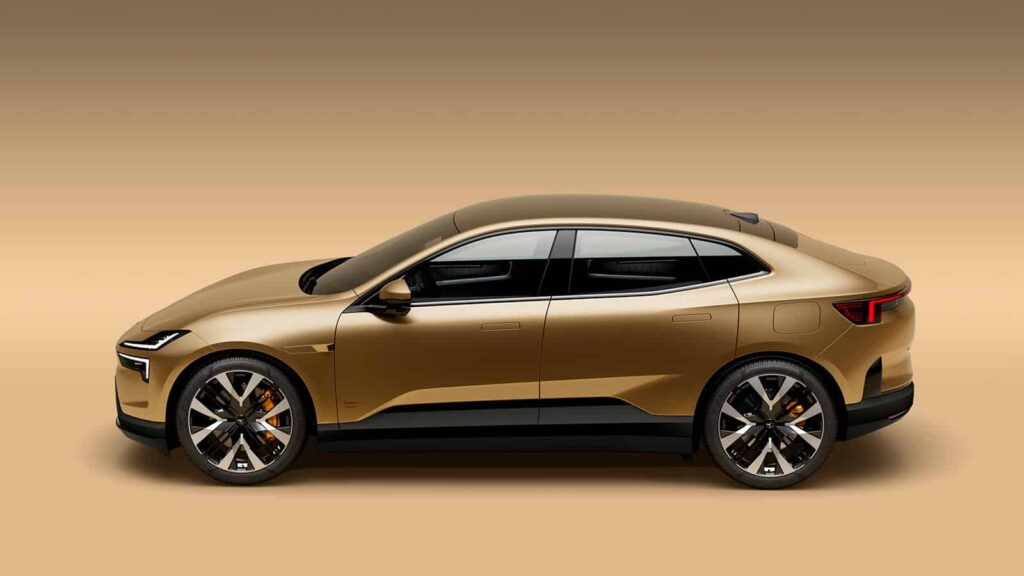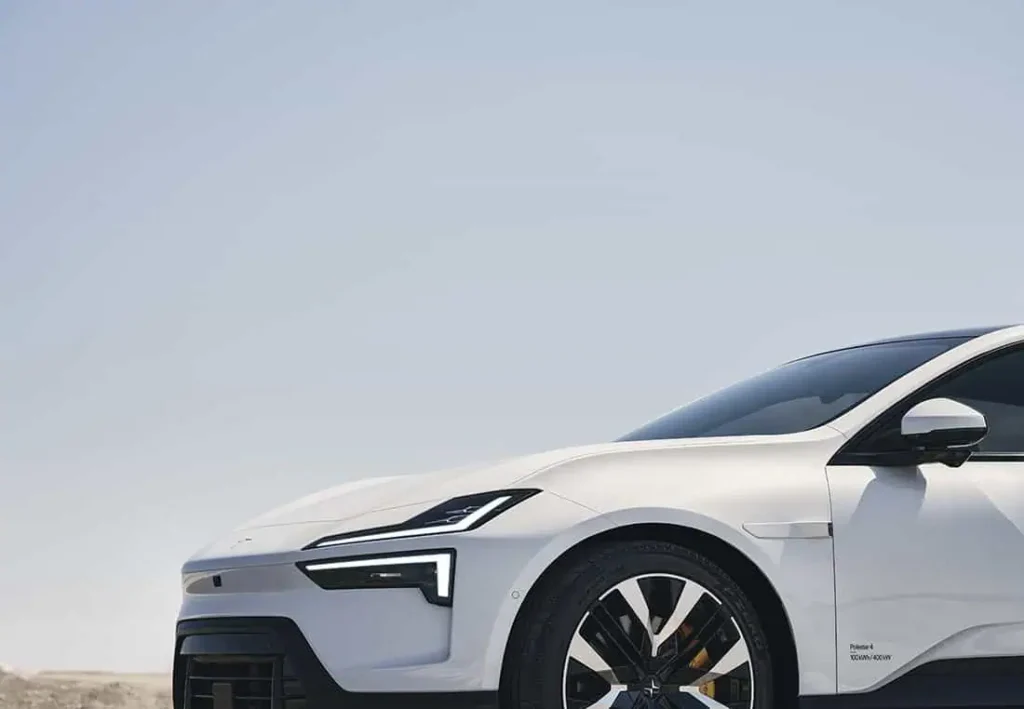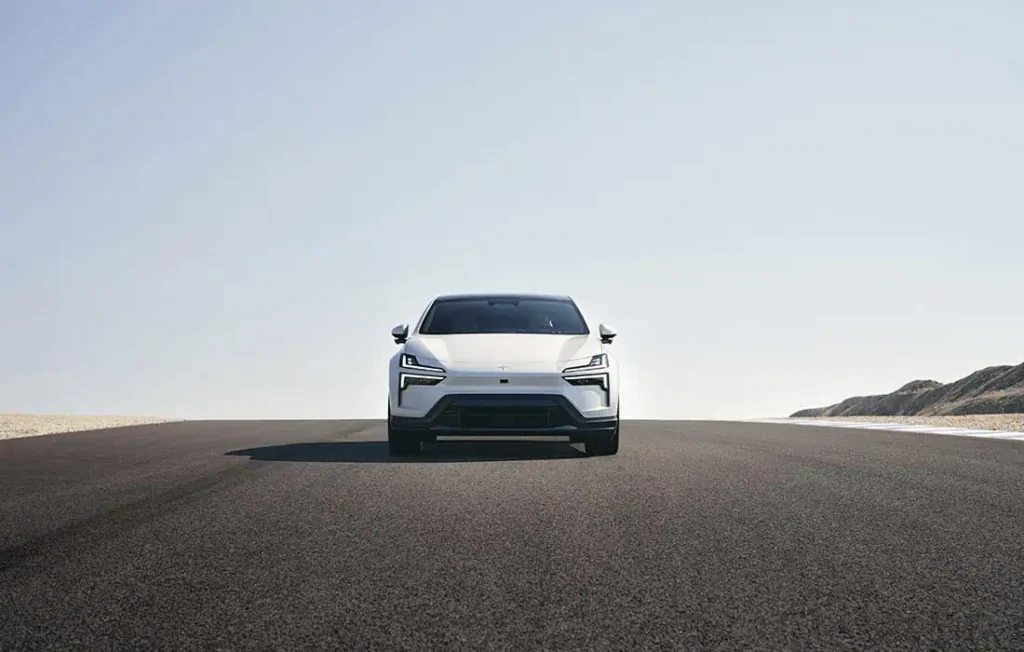Polestar 4 Is Now For Sale in the U.S. But Faces New Tariffs
In April, Polestar announced that the much-anticipated Polestar 4 is now officially for sale in the United States. This announcement follows the successful start of the vehicle’s production and its initial deliveries in China at the end of 2023. Sales commenced in Europe and Australia in January 2024. The Polestar 4 price starts at $54,900. Production for North America will come in the third quarter of 2024.
The Polestar 4 introduces a revolutionary design of the electric SUV coupe. This innovative EV stakes its claim as the fastest Polestar production car to date, offering unparalleled performance metrics. It is positioned between the Polestar 2 and Polestar 3 in terms of size and price.
The Polestar 4 comes lavishly equipped with a host of standard features. Among these, 20-inch Aero alloy wheels complement the vehicle’s profile, while the panoramic glass roof offers an open-air experience. Adaptive cruise control and a 360-degree parking camera with a 3D view assist drivers in navigating complex traffic scenarios. An energy-saving heat pump optimizes battery use.

The front illuminated Polestar logo adds a distinctive touch. E-latch doors provide secure, keyless entry. The power-operated tailgate with soft close feature enhances convenience. Inside, the Polestar 4 boasts an eight-way electrical driver seat and a six-way electrical passenger seat. Wireless phone charging is also standard, reducing the clutter of cables.
The Pilot Pack is a standard feature on the long-range, dual-motor variant in the U.S. It includes Pilot Assist, offering semi-autonomous driving capabilities by maintaining the car’s position in the lane and adjusting the speed to match the vehicle ahead, and Lane Change Assist, which aids the driver in safely changing lanes.
The Pro Pack introduces 21-inch Pro wheels, adding a robust and dynamic stance. Additionally, it features unique black seat belts highlighted with a Swedish gold stripe and Swedish gold valve stem caps.
The Plus Pack offers a graphical head-up display for vital driving information projected directly into the driver’s line of sight, automatically dimming exterior mirrors for clearer vision during night driving, and 12-way electrical seats with manual leg extension alongside electronic reclinable rear seats to maximize passenger comfort.
The Plus pack also introduces MicroTech upholstery, a high-end, sustainable material. For added comfort, the Plus Pack includes three-zone climate control, allowing different temperature settings, a rear control and entertainment screen, heated steering wheel and rear seats, 11 kW AC charging for faster battery top-ups, and a Harman Kardon premium audio system.

The Performance Pack, exclusive to the long-range, dual-motor variant, features 22-inch performance forged wheels, Brembo four-piston brake calipers in Swedish gold, and summer performance tires designed for optimal handling. The interior continues the Swedish gold theme with unique seat belts and valve stem caps.
The Polestar 4’s aerodynamic design is a testament to its innovative engineering. The low nose, retractable door handles, and flush glazing with frameless windows all contribute to reducing drag, while rear aero blades and airflow optimization around the rear light bar enhance efficiency and performance. A unique signature feature is the elimination of the rear glass, replaced by a high-definition camera feed. This setup offers drivers a significantly wider field of view than is typically available.
With the capability to accelerate from 0 to 60 mph in just 3.7 seconds, the Polestar 4 long-range, dual-motor variant stands as the fastest production car the brand has ever developed. The combination of a 544 hp output and 506 lb-ft of torque ensures that this vehicle is blazingly fast.
The long-range, single-motor variant, with its 272 hp and 253 lb-ft of torque, also promises a robust performance. It features a rear-wheel-drive powertrain and targets a preliminary range of over 300 miles according to EPA standards. Both the dual- and single-motor variants are supported by a substantial 100 kWh battery, offering up to 200 kW DC and 11 kW AC charging capabilities.
StoreDot and Polestar Introduced 10-Minute Fast Charging in April
In April, StoreDot and Polestar unveiled silicon anode batteries, offering extreme fast charging, cutting charging time to 10 minutes.
A video showcased how extreme fast charging (XFC) battery technology charged a 77kWh battery pack from 10% to 80% in under 10 minutes. The battery powered a fully drivable Polestar 5 prototype in the demonstration.

Polestar Has Plans to Manufacture in South Korea
Polestar has recently announced plans to extend manufacturing into South Korea through an agreement between Polestar, Geely Holding, and Renault Korea Motors (RKM), slated to commence in 2025.
New 100% Chinese EV Tariffs Threaten Polestar, Volvo, and Lotus Profitability
Volvo, Lotus, and Polestar are owned by China’s Geely Holding and therefore face the most significant near-term impacts from the new 100% Chinese EV tariffs announced by the Biden administration on May 14.
The Polestar 4 is currently in production in China and is scheduled to be imported from there in the coming months. It’s unclear how Geely will handle the cost of the extra tariffs on Lotus electric vehicles, the Polestar 2 and 4, or the Volvo EX30. Lotus started shipping its Emeya luxury EV from China to the U.S. in limited quantities recently.
Automotive expert Tu Le, Founder at Sino Auto Insights, said: “Currently, Polestar is only shipping the 2 from China. Demand for the 2 isn’t very significant in the U.S. (2.2K sold in Q1), so that tariff damages them, but only on the fringes. The 3 will be built in South Carolina and the 4 looks like it’ll be shipped from Korea, so the tariffs will have more effects on parts and batteries for Polestar. That said, Polestar is struggling, so anything that creates friction with the U.S. sales process isn’t good.”
Le continued: “As for Lotus, this could turn out to be a decent-sized issue for them since all the electric vehicles under the brand will be shipped out of China. They could still try to pass on most of the cost to the consumer since it’s a premium vehicle, but it would make their products way overpriced for the U.S. market. This tariff really benefits Porsche since they are getting their lunch eaten in China by China EV Inc. It boxes out a set of viable competitors for the foreseeable future.”

Electric Vehicle Marketing Consultant, Writer and Editor. Publisher EVinfo.net.
Services